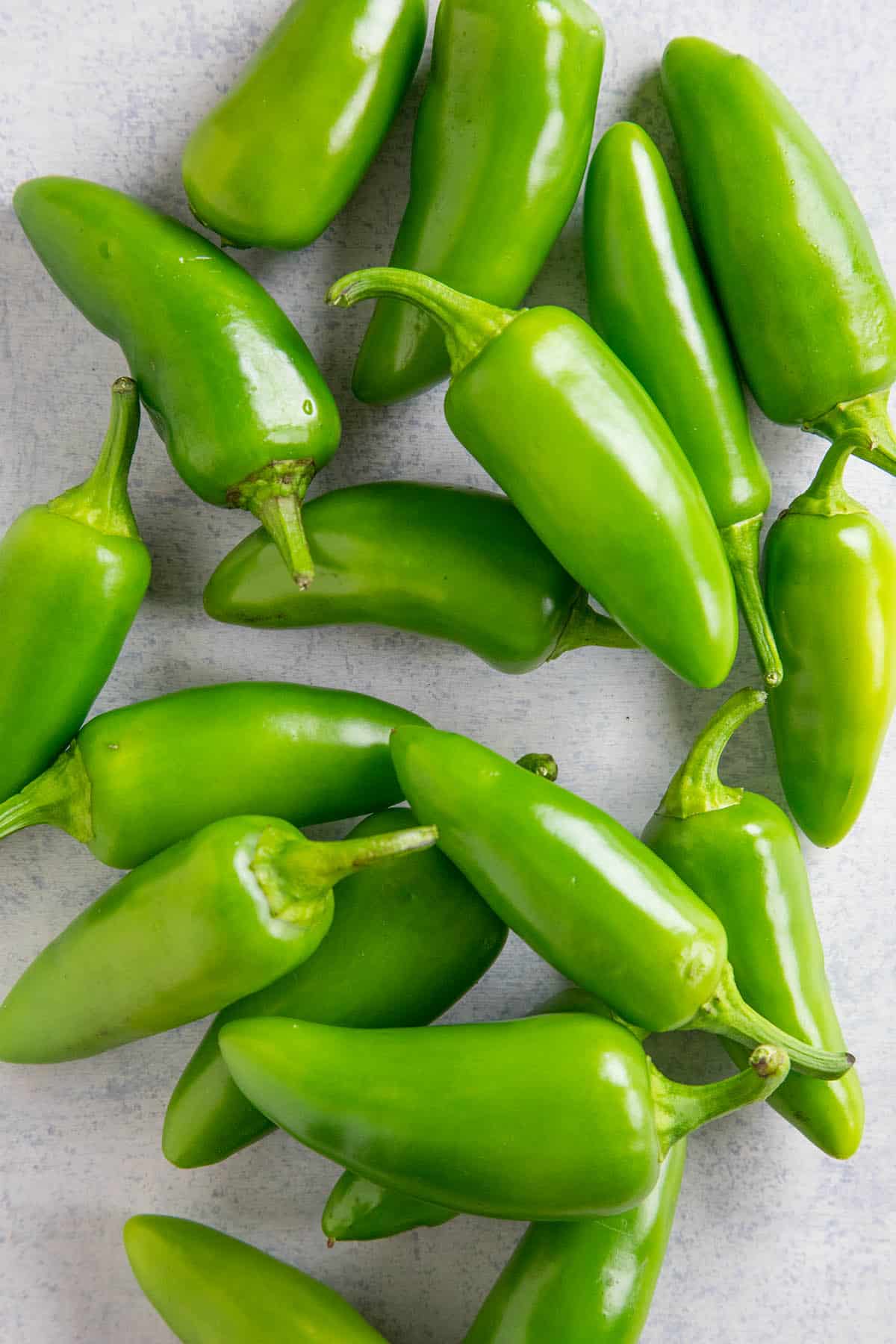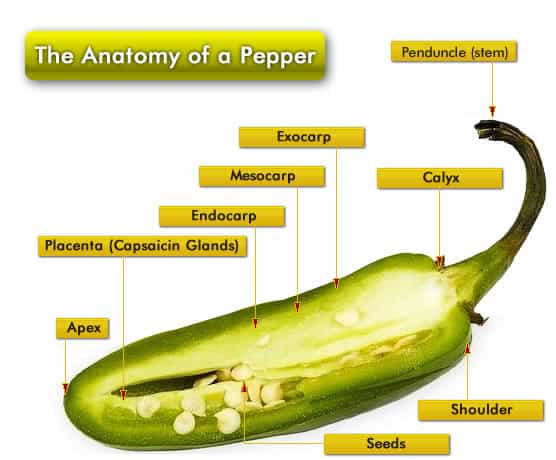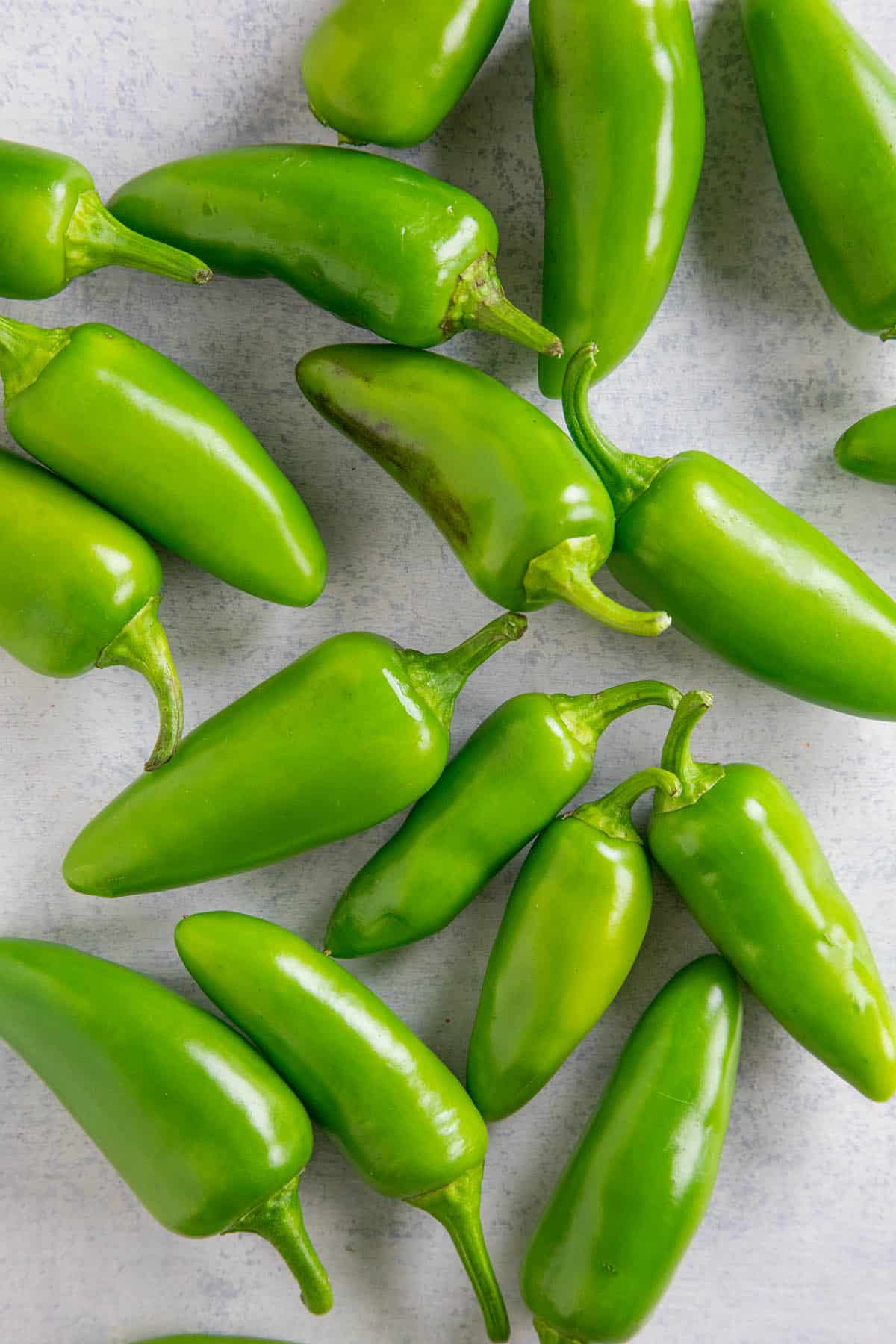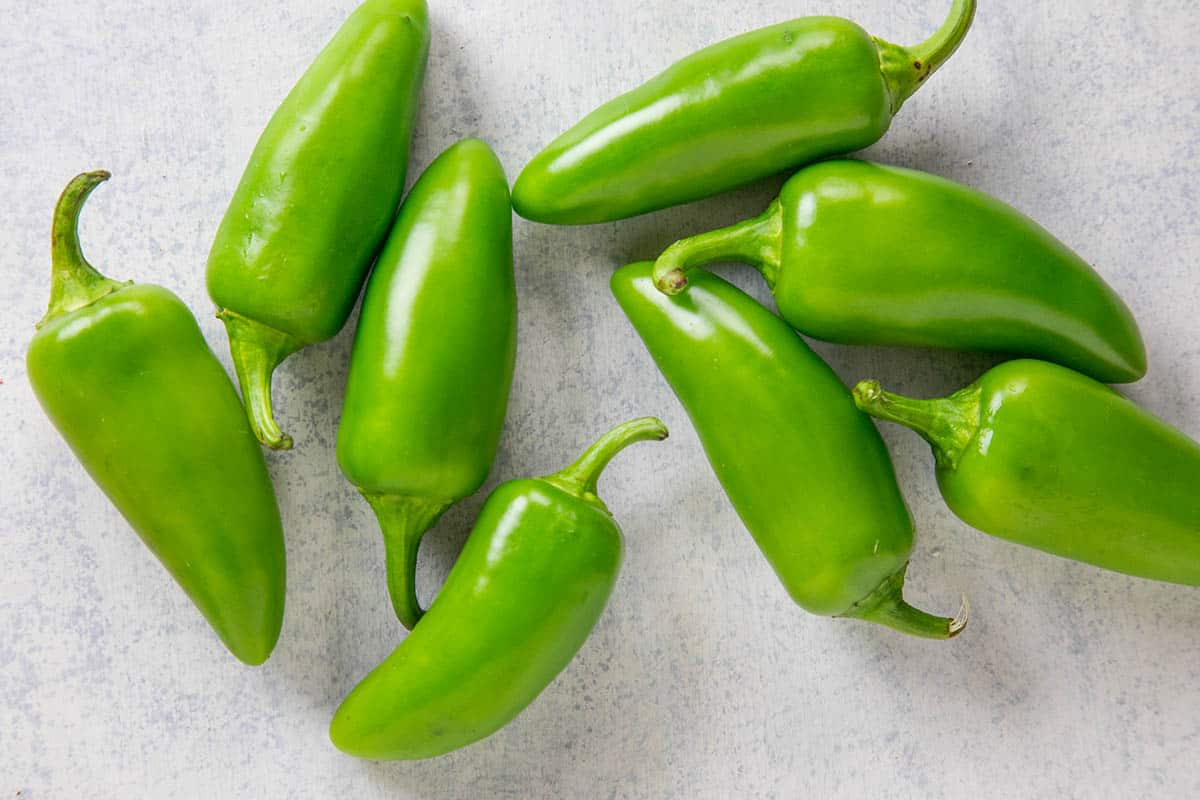This post was updated on 6/25/19 to include new information and photos. It was originally published on 9/22/2013. Origin: Mexico.
The Jalapeno Pepper - America’s Favorite Chile Pepper
America’s Favorite chile pepper is by far the jalapeno, a thick-fleshed pepper about 3 inches long (give or take). It’s a bright green little guy that can be lovingly incorporated into just about anything, from soups to Lemonade. The majority of our jalapeño peppers come from Mexico, where the natives eat them as snack foods, plucking them in droves from sidewalk carts and fields. The red variety of the jalapeño is a bit milder than the green variety, and sweeter as well. They are also milder than their cousin, the serrano pepper, another popular chile pepper, though not as widely known as our favorite, the jalapeño. While originating in Mexico, it is now grown worldwide for it’s popular flavor and mild heat level, which averages around 5,000 Scoville Heat Units. That is hot, but not too hot. You’ll find them served when green, but if you leave the jalapeno pepper on the plant long enough, it will turn red. The red variety are just as delicious as the green jalapeno pepper, though a touch sweeter.
Other Names for Jalapeno
Huachinango - the ripe red jalapeno Chile Gordo - “Fat Chili Pepper” Cuaresmeño Chipotle Pepper - a smoked jalapeno pepper
Growing Jalapeno Peppers
Growing jalapeno peppers is fairly easy because the plants are pretty forgiving. Jalapenos start off a bit slow, so it is helpful to start to grow your plants indoors a few weeks (anywhere from 8-12 weeks) before transferring them outside. Keep the early soil and budding plants constantly moist, but do not over water. Learn more about growing jalapenos and other chili peppers here. Or, check out this Guide to Growing Chili Peppers for helpful information. If you compare the jalapeno pepper to the Hottest Peppers in the World, particular the Hottest Pepper in the World - The Carolina Reaper, you’ll find that jalapeno peppers are actually quite low on the Scoville Heat Scale. Learn more about the Scoville Scale Here. How much vitamin C, you ask? A single 14 gram jalapeno pepper contains 10% of your daily needs. According to Nutrition Data, a single 73 gram chili pepper contains 83%. Jalapenos and other spicy chili peppers can also help you lose or control your weight. Capsaicin, the chemical that makes chili peppers hot, is a thermogenic. Thermogenics stimulate the body’s burning of fat by increasing the metabolism of the body’s adipose tissue, generating heat. For losing weight, a smart and healthy move is to drop fatty foods and replace them with some chili pepper spice, along with the inclusion of regular exercise, of course. At Daegu University, Korea, biotechnologist Jong Won Yun and colleagues report that capsicum lowers caloric intake, shrinks fat tissue and reduces fat levels in the blood. I characterize the flavor of fresh jalapenos as bright, vegetable and very green, with a slight level of heat. Roasted jalapenos peppers are richer, slightly smoky, earthy with good heat. My wife has ZERO trouble eating foods made with jalapeno peppers. It’s basically a gateway pepper. You get the right amount of spice with them, but then soon you find yourself craving hotter and spicier foods. Excellent! When cooking with them, use them as you would use a bell pepper. Remove the stem, chop them, then use them as the recipe calls for. You can core the jalapenos to reduce the overall heat if you’d like. I like to leave the innards intact for that extra bit of kick. Jalapenos are also wonderful when roasted. You can roast them over an open flame until the skins char and bubble, then peel them off. Or you can broil or bake them to roast them. Learn how to roast chili peppers here. I cook jalapenos into just about everything. Seriously, I love them so. Below is a list of recipes to try that feature or incorporate jalapeno peppers.



